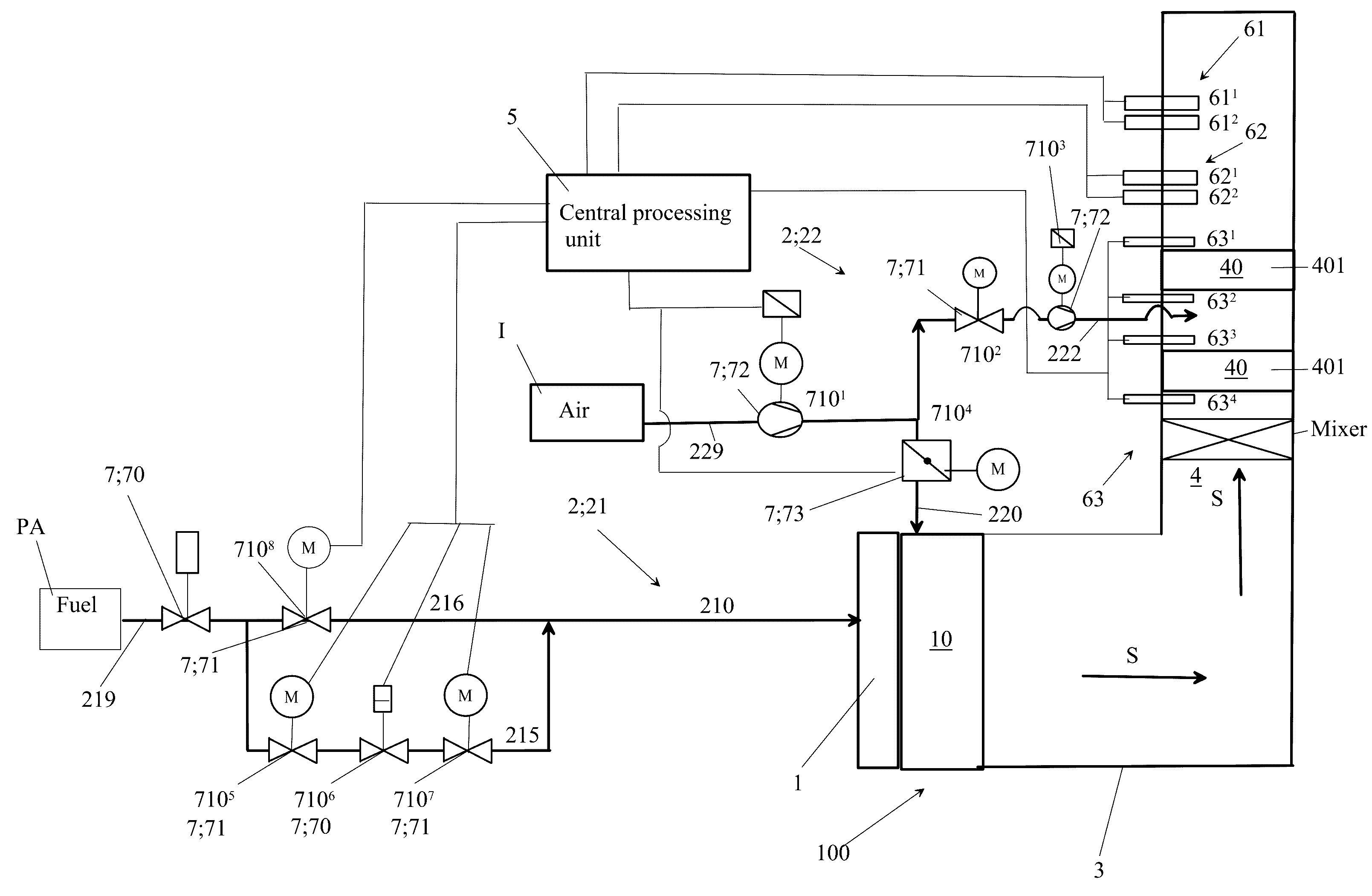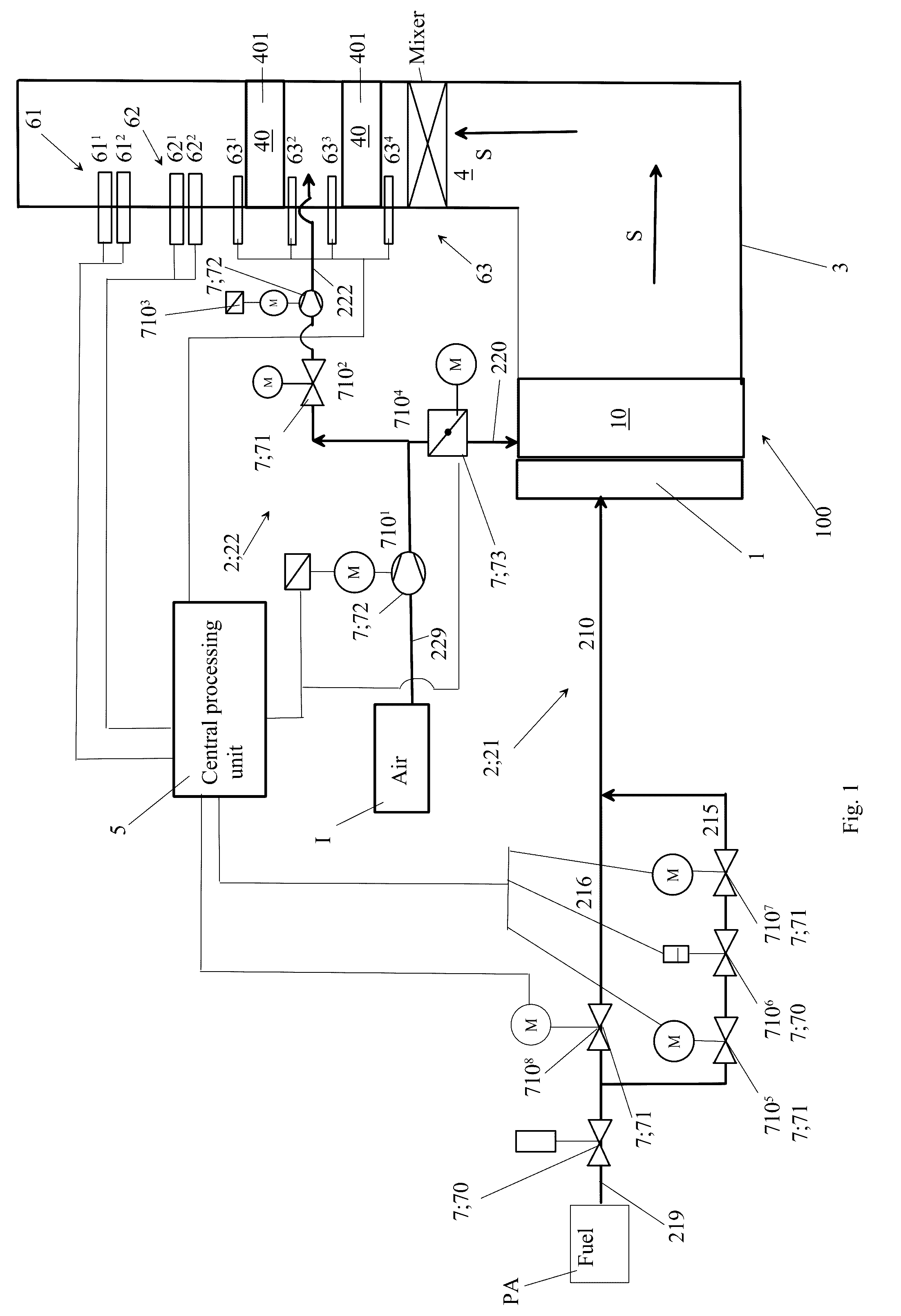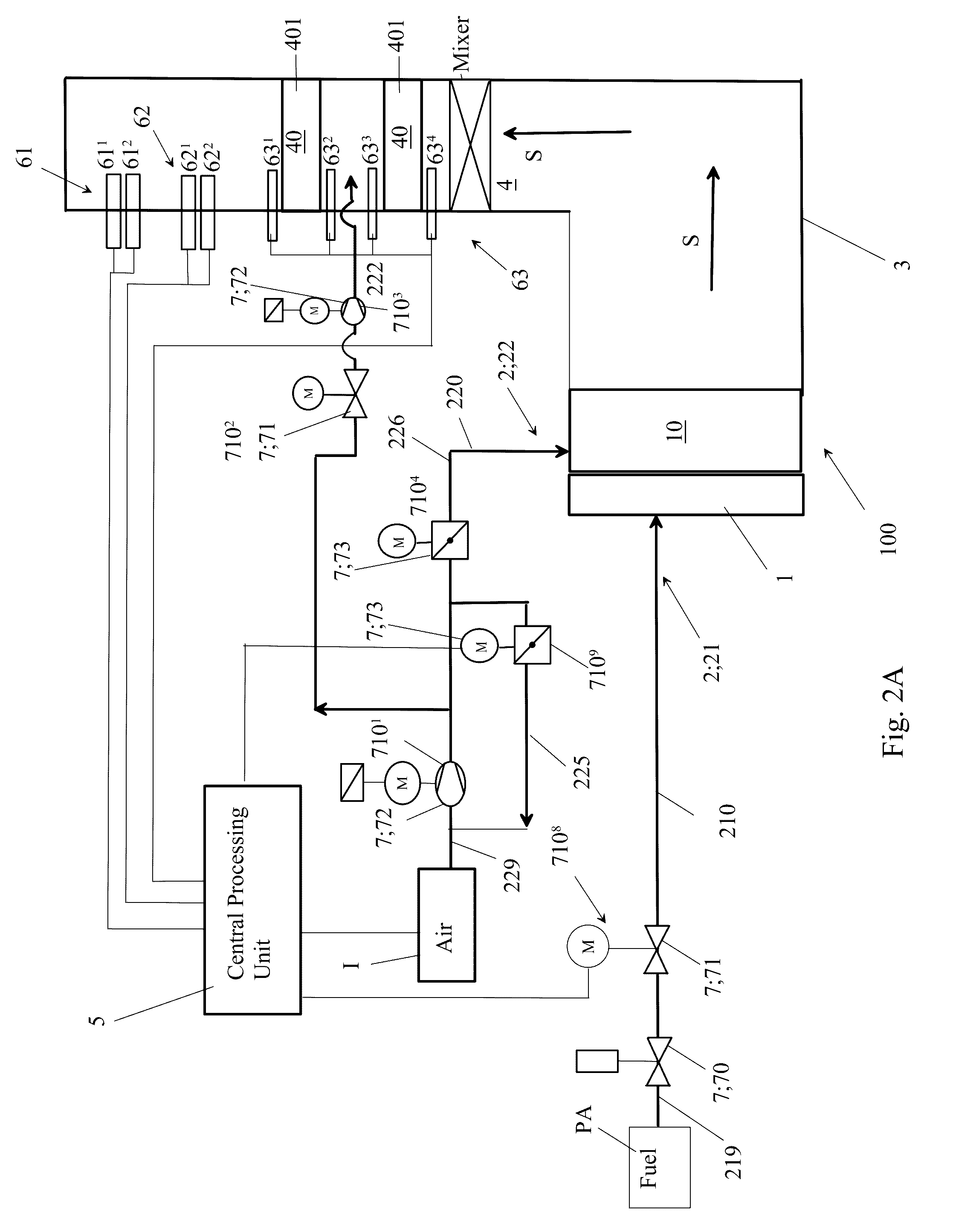Arrangement and burner automation for adjusting the ratio between supplied amounts of fuel and air in an industrial burner
a technology of industrial burners and burners, which is applied in the direction of burner control devices, emission prevention, combustion types, etc., can solve the problems of nox, unable to complete thermal combustion, and always generating nitrogen oxides in the thermal combustion process, etc., and achieve the effect of expanding the effective operating range of the catalytic converter
- Summary
- Abstract
- Description
- Claims
- Application Information
AI Technical Summary
Benefits of technology
Problems solved by technology
Method used
Image
Examples
Embodiment Construction
[0084]As can be seen from FIG. 5 shows test results from 2.6 MW capacity industrial burner with applied catalytic flue gas treatment (Oilon laboratory Lahti, Finland). The burner construction and function was similar as defined in claims. As can be seen from FIG. 5 NOx average was through measuring period <2 ppm (dry) and CO average was through measuring period <4 ppm (dry).
[0085]FIG. 6 shows a flue gas concentration before a three-way catalytic converter which enables most efficient conversion of NOx and CO in a catalytical zone of said a three-way converter. The following reactions take place in a three-way converter:
[0086]Main oxidation reactions:
CO+0.5 O2—CO2
CH4+2O2—CO2+2H2O
[0087]Main reduction reactions:
2NO+2CO—N2+2CO2
4NO+CH4—2N2+CO2+2H2O
[0088]As can be seen from FIG. 6, air to fuel ratio (α) should be almost stoichiometric in fuel gases before a three-way catalytic converter said ratio. The amount of O2 to mean amount of CO (mole / mole) should be nearly stoichiometric; the me...
PUM
 Login to View More
Login to View More Abstract
Description
Claims
Application Information
 Login to View More
Login to View More - R&D
- Intellectual Property
- Life Sciences
- Materials
- Tech Scout
- Unparalleled Data Quality
- Higher Quality Content
- 60% Fewer Hallucinations
Browse by: Latest US Patents, China's latest patents, Technical Efficacy Thesaurus, Application Domain, Technology Topic, Popular Technical Reports.
© 2025 PatSnap. All rights reserved.Legal|Privacy policy|Modern Slavery Act Transparency Statement|Sitemap|About US| Contact US: help@patsnap.com



